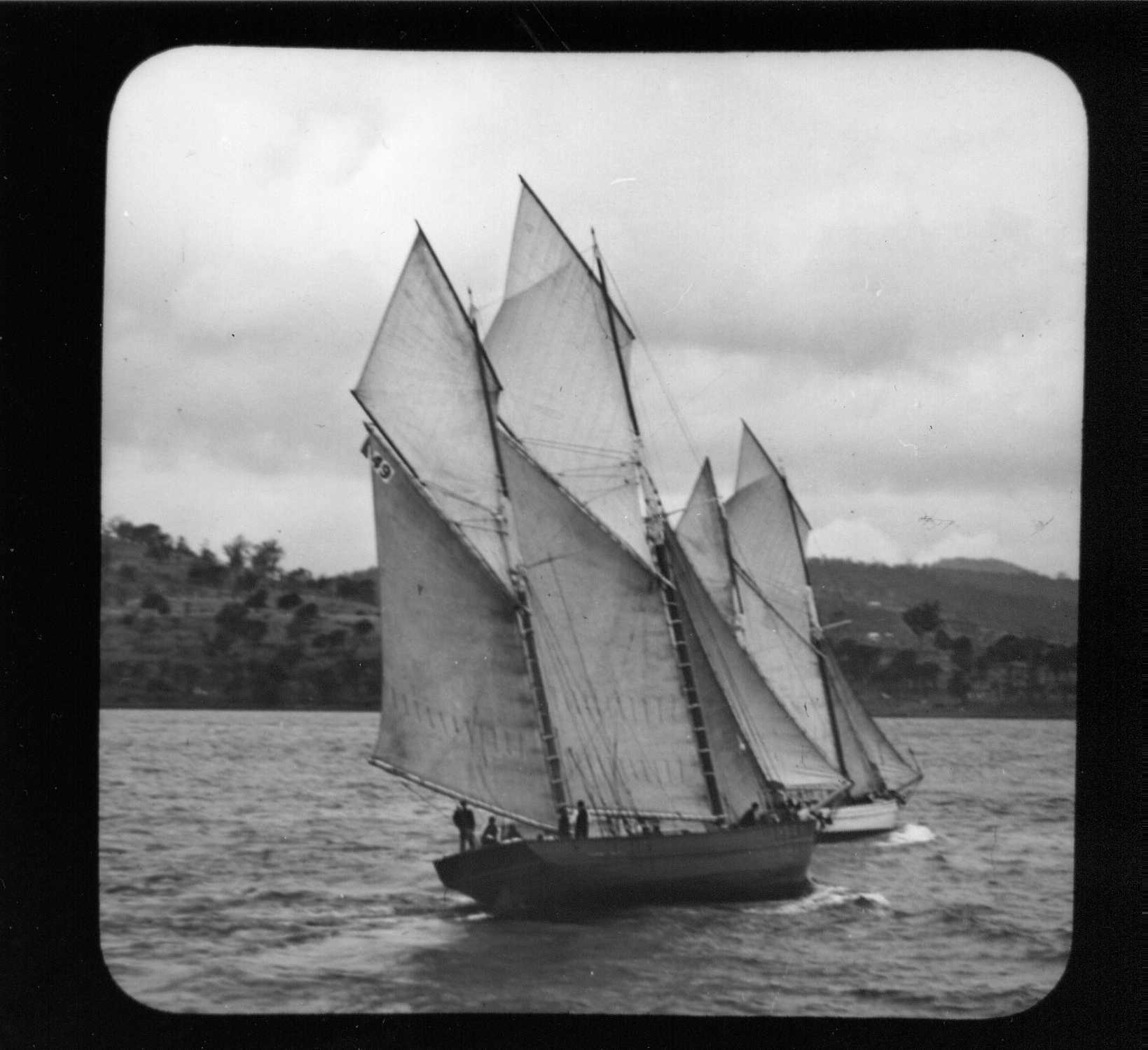May Queen's Working Life
During her 106-year working life as a sail trading vessel (1867 - 1973) the SV May Queen was largely used by Henry Chesterman and his successors in the business Chesterman and Co.
Her primary cargo was construction materials, sawn timber, shingles and railway sleepers, carried to Hobart for house building and industry. But she also brought coal to Hobart, as well as quarried stone, apples, pears and other fruit.
On her outbound journey from Hobart she carried supplies, including hay and oats for the bullock teams used in the forests to pull logs to the mills, steel railway lines, boilers and steam engines for use by the timber industry.
SV May Queen operated mostly in south east Tasmania carrying sawn timber from Chesterman and Co's Raminea sawmill at the mouth of the Esperance River near Dover to Victoria Dock in Sullivan's Cove, Hobart, a journey that she could complete in 8 hours in favourable weather.
Trading ketch races were a feature of many local regattas, particularly the Royal Hobart Regatta until 1954.
The ketch race at the Royal Hobart Regatta was known as the Cock of the Derwent Race and there was intense rivalry between the ketches when they raced for the honour of flying the Golden Cock.
SV May Queen raced with great success, winning her first Royal Hobart Regatta in 1868 and competing in the last trading ketch race in 1954, coming second to SV Lenna.
During the first division races between 1882 and 1954 SV May Queen achieved a record haul of placings, with nine firsts, eight seconds and two thirds.
At the end of her working life SV May Queen was gifted to the Tasmanian Government by her then owners H Jones and Co and passed into the care of the Marine Board of Hobart by Premier Eric Reece 'To be preserved as a reminder of Tasmania's maritime history'.
The relatively modern motor and propeller were removed. The masts and bowsrpit were repaired and the rigging replaced, bringing her back to her pre-1954 condition.
A steel beam was placed under the keel to give the hull stability and prevent the bow or stern dropping.
In 1997, the Marine Board's successor, a state owned company called 'The Hobart Ports Corporation Pty. Ltd.' could no longer justify the ongoing maintenance of the SV May Queen and a new chapter in her life commenced with uncertainty for her future.


